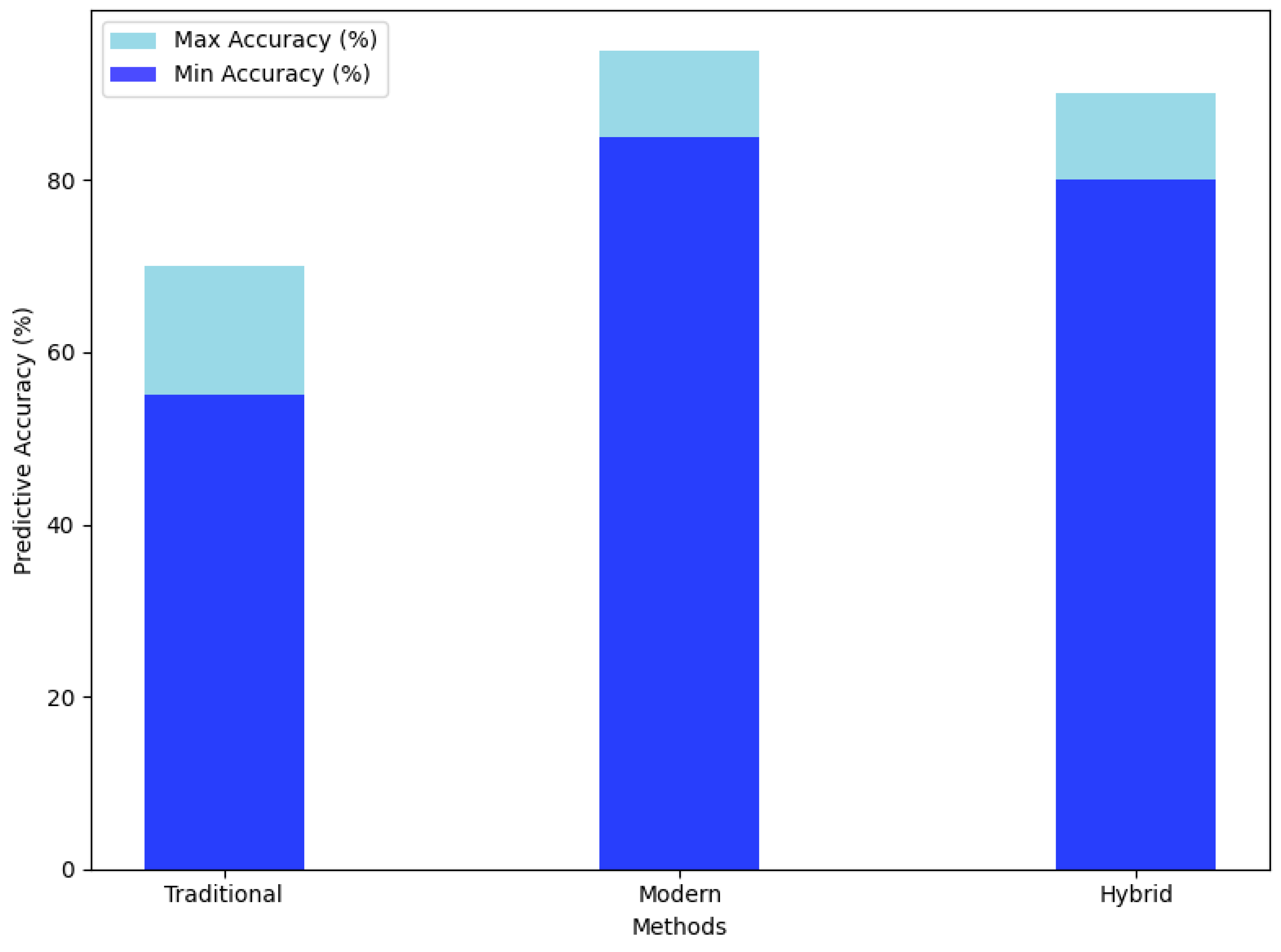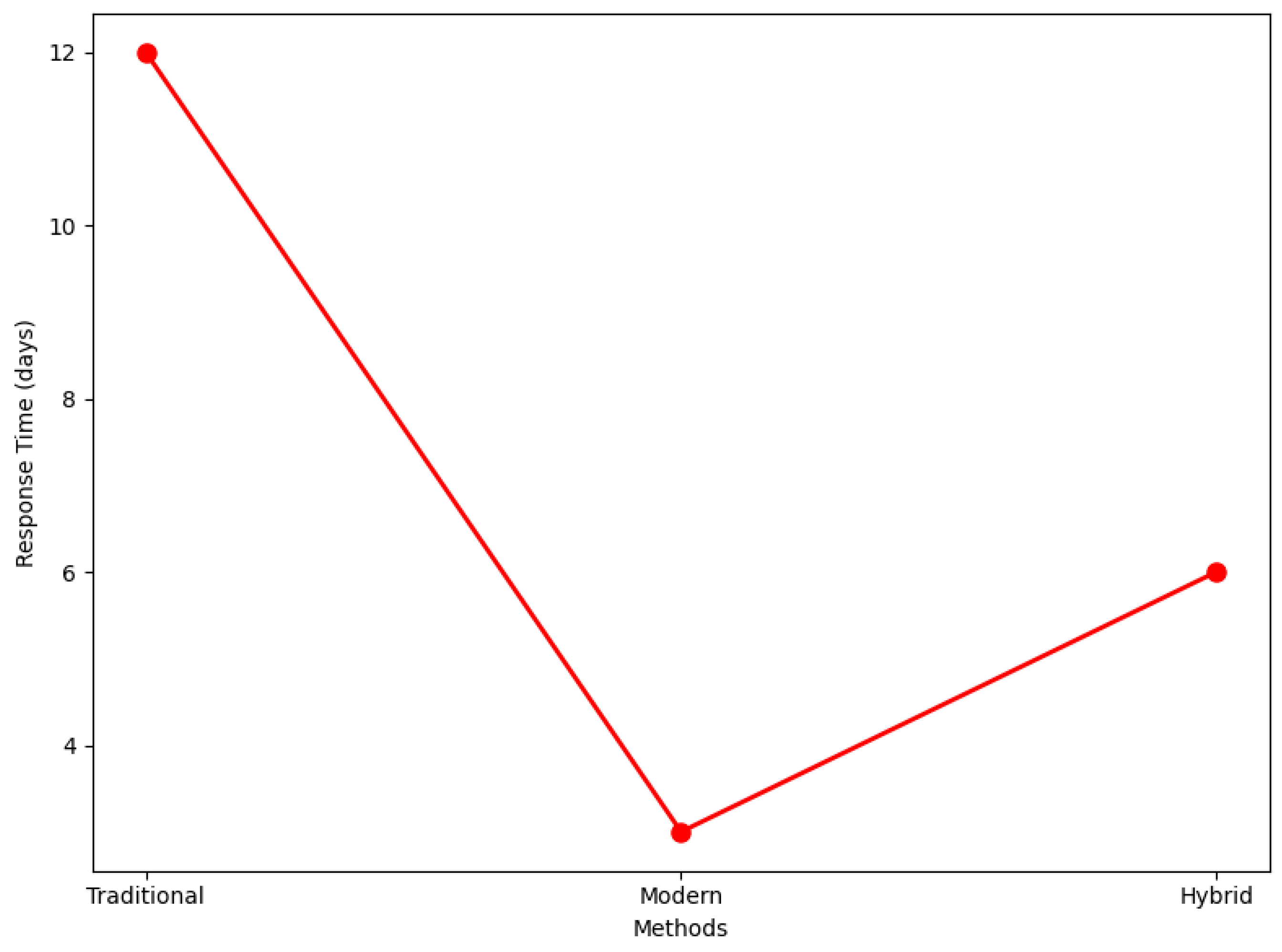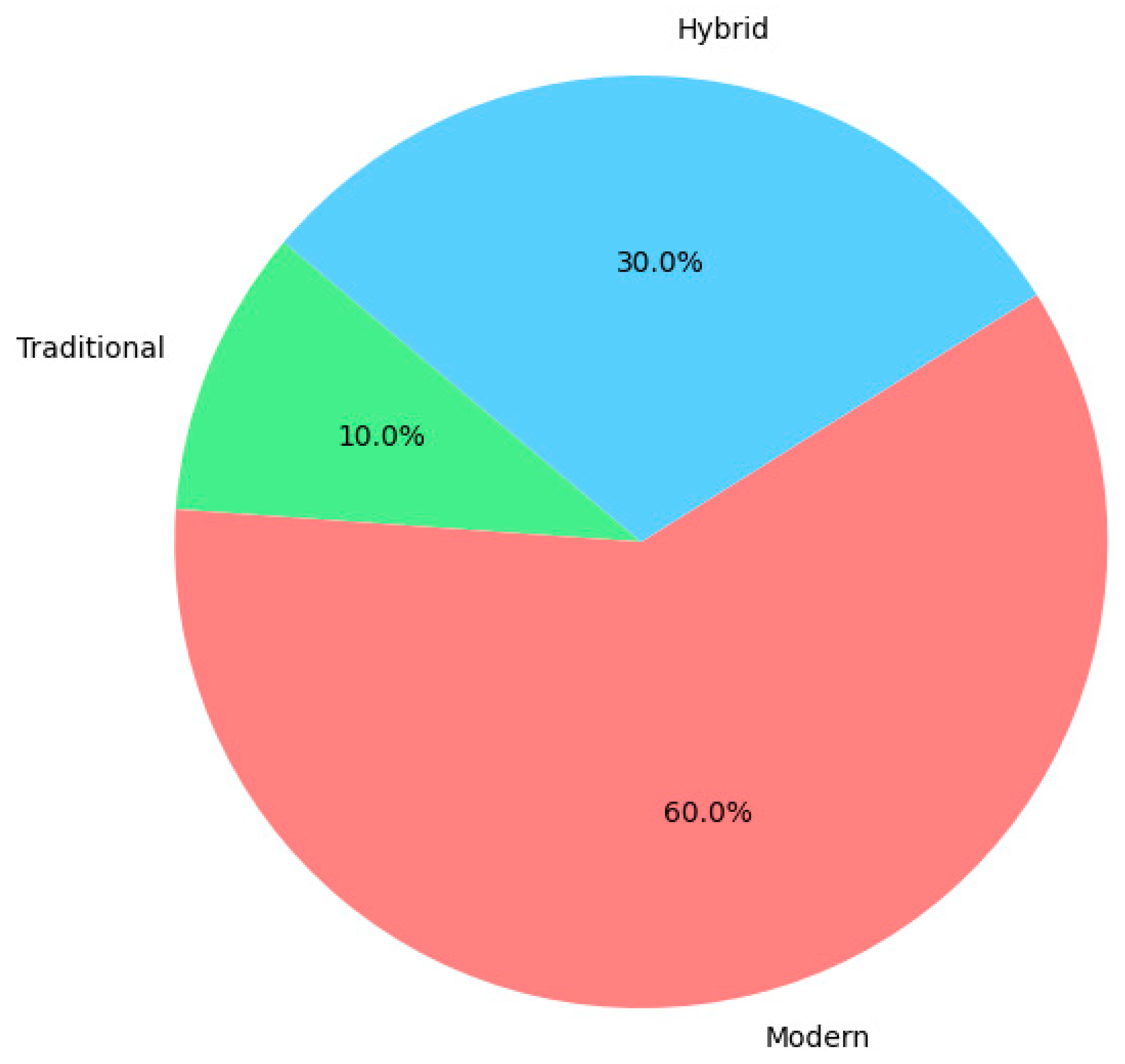Introduction
Dengue fever, caused by the Aedes mosquito, remains a growing public health crisis, particularly in tropical and subtropical regions. The World Health Organization (WHO) has reported an alarming increase in global dengue cases, estimating that over 400 million infections occur annually, with more than 3.9 billion people at risk [
1]. In the absence of a widely effective vaccine, early warning systems (EWS) play a critical role in predicting outbreaks and enabling timely interventions. Traditional EWS rely on retrospective data such as case reports and vector surveillance. However, these systems often face delays and are limited in their predictive power due to the slow data collection process [
2].
Modern EWS, which utilize AI and ML with real-time data sources such as satellite imagery and mobile phone data, offer improved accuracy and faster response times. However, their high implementation cost and complexity limit their applicability in resource-constrained settings [
3]. This paper introduces a hybrid model combining the best elements of both traditional and modern systems, offering a scalable and effective solution for dengue outbreak prediction, particularly in low- and middle-income countries.
Comparative Analysis: Traditional, Modern, and Hybrid EWS Approaches
The table below summarizes the key features of traditional, modern, and hybrid approaches to EWS:
| Criteria |
Traditional EWS |
Modern EWS |
Hybrid EWS |
References |
| Data Sources |
Epidemiological data, meteorological data |
Real-time data (satellite imagery, mobile data) |
Combination of both traditional and real-time data |
[4] |
| Predictive Accuracy |
55-70% |
85-95% |
80-90% |
[3] |
| Response Time |
10-14 days |
2-4 days |
5-7 days |
[2,3] |
| Cost |
~$50,000/year |
~$300,000/year |
~$150,000/year |
[5,6] |
| Scalability |
Limited |
High |
Moderate |
[4] |
| Technological Requirements |
Minimal |
High |
Moderate |
[7] |
Figure 1 chart visually compares the predictive accuracy of traditional, modern, and hybrid EWS methods. Modern systems show the highest accuracy, but the hybrid model also demonstrates significant improvements over traditional methods, offering a middle-ground solution.
Figure 2 chart illustrates how response times differ between the three methods. Modern EWS are the fastest, but the hybrid model reduces delays significantly compared to traditional systems, while still being feasible for low-resource settings.
Figure 3 chart provides a clear comparison of the annual cost for each system. The hybrid model offers a cost-effective balance between the low costs of traditional systems and the high costs of modern, real-time systems.
Case Studies: Real-World Applications of the Hybrid Model
Brazil: In Brazil, where dengue is endemic, a hybrid model integrating satellite data and traditional surveillance has shown increased accuracy in predicting outbreaks, especially in urban areas with high mosquito proliferation [
5].
Malaysia: Malaysia's adoption of AI-driven models alongside traditional data collection has reduced false alarms and enabled more targeted interventions, especially in high-risk areas [
8].
Conclusion
The hybrid EWS model offers a practical, scalable solution for dengue outbreak management, particularly in resource-limited settings. By combining traditional epidemiological data with real-time analytics, the hybrid approach improves both accuracy and response time without requiring the extensive infrastructure needed for fully modern systems. Case studies from Brazil, Malaysia, and Thailand demonstrate that this model can be adapted to various contexts, making it a viable option for countries seeking to enhance their dengue control strategies.
Acknowledgements
The completion of this research work was made possible through the collaborative efforts and dedication of a multidisciplinary team. We extend our sincere appreciation to each member for their invaluable contributions.
Compliance with ethical standards
This article does not involve any studies conducted by the authors that included human participants.
Conflict of interest
The authors affirm that there are no conflicts of interest to disclose.
References
- WHO. Dengue and severe dengue. 2024 [cited 2024 11 September]; Available from: https://www.who.int/news-room/fact-sheets/detail/dengue-and-severe-dengue.
- Hussain-Alkhateeb, L., et al., Early warning and response system (EWARS) for dengue outbreaks: Recent advancements towards widespread applications in critical settings. PloS one, 2018. 13(5): p. e0196811. [CrossRef]
- Baharom, M., et al., Dengue early warning system as outbreak prediction tool: A systematic review. Risk Management and Healthcare Policy, 2022: p. 871-886. [CrossRef]
- Tazkia, R.A.K., V. Narita, and A.S. Nugroho. Dengue outbreak prediction for GIS based early warning system. in 2015 International Conference on Science in Information Technology (ICSITech). 2015. IEEE. [CrossRef]
- Benitez-Valladares, D., et al., Validation of the Early Warning and Response System (EWARS) for dengue outbreaks: Evidence from the national vector control program in Mexico. PLOS Neglected Tropical Diseases, 2021. 15(12): p. e0009261. [CrossRef]
- Stahl, H., et al., Signalling disease outbreaks: cost-effectiveness analysis of early warnings and response systems in the case of dengue control. Antimicrobial Resistance and Infection Control, 2015. 4(Suppl 1): p. P235. [CrossRef]
- Racloz, V., et al., Surveillance of dengue fever virus: a review of epidemiological models and early warning systems. PLoS neglected tropical diseases, 2012. 6(5): p. e1648. [CrossRef]
- Zaki, R., et al., Public perception and attitude towards dengue prevention activity and response to dengue early warning in Malaysia. PloS one, 2019. 14(2): p. e0212497. [CrossRef]
|
Disclaimer/Publisher’s Note: The statements, opinions and data contained in all publications are solely those of the individual author(s) and contributor(s) and not of MDPI and/or the editor(s). MDPI and/or the editor(s) disclaim responsibility for any injury to people or property resulting from any ideas, methods, instructions or products referred to in the content. |
© 2024 by the authors. Licensee MDPI, Basel, Switzerland. This article is an open access article distributed under the terms and conditions of the Creative Commons Attribution (CC BY) license (http://creativecommons.org/licenses/by/4.0/).







